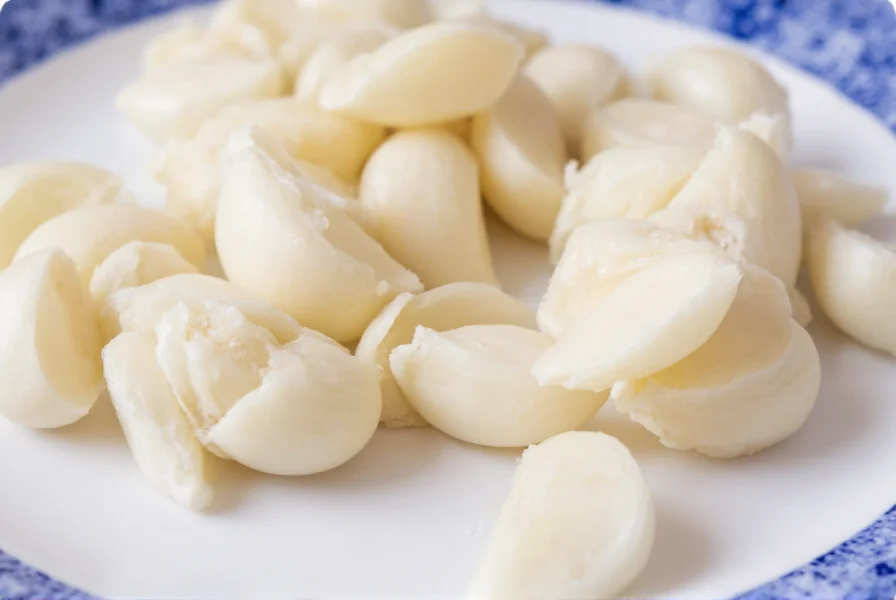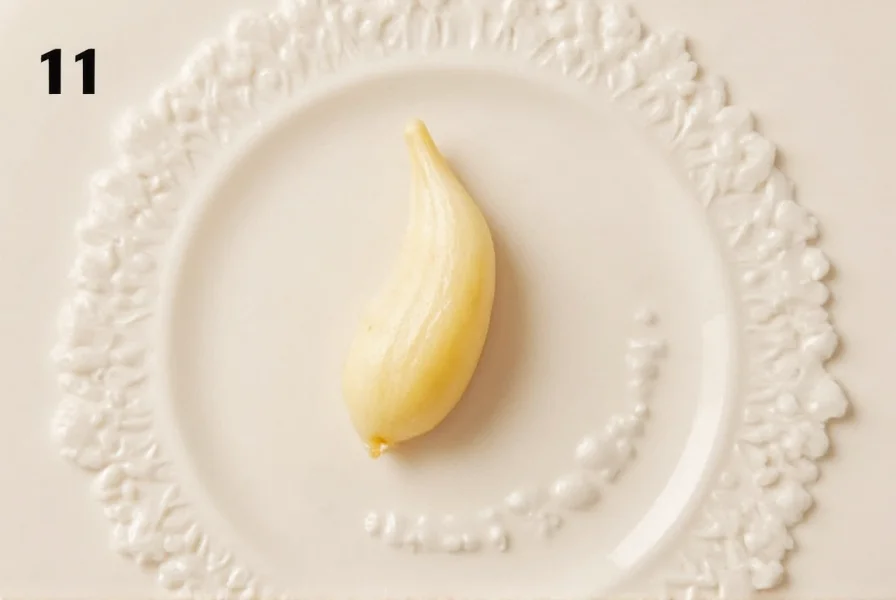When converting garlic cloves to teaspoons for cooking, understanding precise measurements ensures your recipes turn out perfectly every time. This guide provides accurate conversions, practical tips, and a helpful reference chart for working with garlic in the kitchen.
Understanding Garlic Measurements
Garlic measurements aren't always straightforward because cloves vary significantly in size. When recipes call for "teaspoons of garlic" rather than "cloves," they're typically referring to minced or chopped garlic. Here's what you need to know:
- A small garlic clove (about 1/2" long) yields approximately 1/4 teaspoon minced
- A medium garlic clove (about 3/4" long) yields approximately 1/2 teaspoon minced
- A large garlic clove (1" or longer) yields approximately 3/4 teaspoon minced
The exact measurement depends on how finely you mince the garlic and how tightly you pack it into the measuring spoon. Professional chefs often recommend using the "heaping" method for more accurate results in home cooking.
| Garlic Form | Equivalent Measurement |
|---|---|
| 1 small garlic clove | 1/4 teaspoon minced |
| 1 medium garlic clove | 1/2 teaspoon minced |
| 1 large garlic clove | 3/4 teaspoon minced |
| 1 teaspoon minced garlic | 2 small cloves or 1.5 medium cloves |
| 1 tablespoon minced garlic | 6 small cloves or 4.5 medium cloves |
Factors That Affect Garlic Measurements
Several variables impact how many teaspoons you'll get from a garlic clove:
Clove Size Variations
Garlic bulb varieties differ significantly. Softneck garlic (common in supermarkets) typically has smaller cloves than hardneck varieties. Within a single bulb, you'll find both small and large cloves.

Preparation Method
Your technique affects volume:
- Minced finely: Produces more compact measurements (closer to 1/2 tsp per medium clove)
- Chopped coarsely: Takes up more space (may yield closer to 2/3 tsp per medium clove)
- Pressed garlic: Creates a denser product (about 1/3 tsp per medium clove)
Packing Density
How tightly you press minced garlic into the measuring spoon changes the quantity. For most recipes, a light tap to level off is sufficient without compacting.
Practical Cooking Applications
Understanding how many teaspoons in a clove of garlic helps when adapting recipes or scaling ingredients. Consider these scenarios:
Recipe Substitutions
If your recipe calls for 1 teaspoon of minced garlic but you only have whole cloves, use 2 medium cloves. For 2 teaspoons, use 4 medium cloves or 3 large cloves.
Garlic Intensity Considerations
Remember that minced garlic delivers more intense flavor than whole cloves in cooking. When converting garlic clove to teaspoon measurements for raw applications (like salad dressings), use slightly less than the standard conversion.

Storage and Convenience Factors
Peeled garlic cloves keep well frozen (up to 6 months), making pre-measured portions practical. Many home cooks freeze minced garlic in ice cube trays with oil, where one cube typically equals 1 teaspoon of minced garlic.
When Measurements Aren't Everything
While precise garlic measurement equivalents matter for baking and delicate sauces, many cooking applications benefit from tasting as you go. Garlic flavor varies by season and growing conditions, so adjust according to your palate and the specific garlic you're using.
For most savory dishes, the classic French mirepoix ratio provides a helpful guideline: use 1 part garlic to 2 parts onion and 2 parts celery by volume. This approach creates balanced flavor without requiring exact teaspoon measurements.
Frequently Asked Questions
How many teaspoons is 2 cloves of garlic?
Two medium garlic cloves yield approximately 1 teaspoon of minced garlic. For small cloves, you'll get about 1/2 teaspoon, while two large cloves produce roughly 1 1/2 teaspoons of minced garlic.
Can I substitute garlic powder for fresh garlic?
Yes, use 1/8 teaspoon garlic powder to replace one medium garlic clove. Garlic powder has more concentrated flavor, so start with less and adjust to taste. Remember that powder lacks the moisture of fresh garlic, which may affect recipe texture.
Why does my garlic measurement differ from recipe expectations?
Garlic size varies by season and variety. Hardneck garlic typically has larger cloves than softneck. Also, how finely you mince and how tightly you pack the spoon affects volume. For critical recipes, weigh your garlic (1 medium clove = 10g unpeeled, 3g peeled).
How much jarred minced garlic equals one fresh clove?
Most commercial jarred minced garlic products indicate that 1/2 teaspoon equals one medium fresh garlic clove. However, check your specific brand as concentrations vary. Jarred garlic often contains preservatives that slightly alter flavor intensity compared to fresh.
Does roasting garlic change the teaspoon measurement?
Roasting reduces garlic's volume by about 30% due to moisture loss. One roasted medium clove yields approximately 1/3 teaspoon of paste. For roasted garlic recipes, measure after roasting for accuracy since the cloves shrink significantly during cooking.










 浙公网安备
33010002000092号
浙公网安备
33010002000092号 浙B2-20120091-4
浙B2-20120091-4